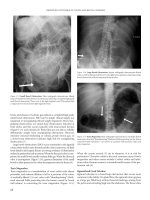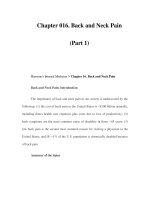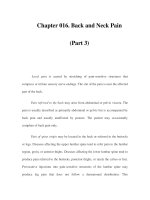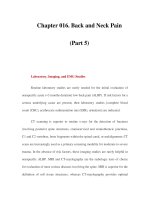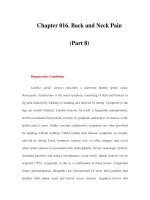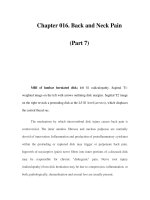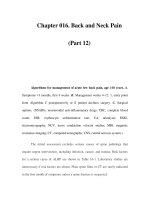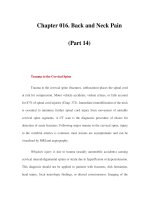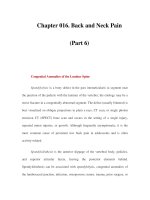Chapter 073. Enteral and Parenteral Nutrition (Part 12) pps
Bạn đang xem bản rút gọn của tài liệu. Xem và tải ngay bản đầy đủ của tài liệu tại đây (51.32 KB, 5 trang )
Chapter 073. Enteral and
Parenteral Nutrition
(Part 12)
Table 73-10 Enteral Formulas
Composition Characteristics Clinical Indications
STANDARD ENTERAL FORMULA
1. Complete dietary products (+)
a
a. Caloric density 1 kcal/mL
b. Protein ~14% cals, casein
ates,
Suitable for mos
t patients
requiring tube feeding; some can be
used orally
soy, lactalbumin
c. CHO ~60% cals, hydrolyzed
corn starch, maltodextrin, sucrose
d. Fat ~30% cals, corn, soy,
safflower oils
e. Recommended daily intake of
all minerals and vitamins in >1500
kcal/d
f. Osmolality (mosmol/kg): ~300
MODIFIED ENTERAL FORMULAS
1. Caloric density 1.5–
2 kcal/mL
(+)
2. a. High protein ~20–
25%
protein (+)
b. Hydrolyzed protein to small
peptides (+)
Fluid-restricted patients
Critically ill patients
Impaired absorption
Immune-enhancing diets
Liver failure patients intolerant of
c. Arginine, glutamine,
nucleotides, ω3 fat (+++)
d. Branched-
chain amino acids,
aromatic amino acids (+++)
e. Low protein of high biologic
value
3. a. Low fat, partial MCT
substitution (+)
b. Fat >40% cals (++)
c. Fat from MUFA (++)
d. Fat from ω3 and ω6 linoleic
acid (+++)
4. Fiber provided as s
oy
polysaccharide (+)
0.8 g/kg protein
Renal failure patient for brief
periods if critically ill
Fat malabsorption
Pulmonary failure with CO
2
retention on standard formula, limited
utility
Improvement in glycemic index
control in diabetes
Improved ventilation in ARDS
Improved laxation
Cost: + inexpensive; ++ moderately expensive; +++ very expensive.
Note: ARDS, acute respirato
ry distress syndrome; CHO, carbohydrate;
MCT, medium-
chain triglyceride; MUFA, monounsaturated fatty acids; ω3 or ω6,
polyunsaturated fat with first double bond at carbon 3 (fish oils) or carbon 6
(vegetable oils).
Source: Adapted from chapter in Harrison'
s Principles of Internal
Medicine,
16e, by Lyn Howard, MD.
Complications
Aspiration
The debilitated patient with poor gastric emptying and impairment of
swallowing and cough is at risk for aspiration; this is particularly true for those
who are mechanically ventilated. Tracheal suctioning induces coughing and
gastric regurgitation, and cuffs on endotracheal or tracheostomy tubes seldom
protect against aspiration. Preventive measures include elevating the head of the
bed to 30 degrees, using nurse-directed algorithms for formula advancement,
combining enteral with parenteral feeding, and using post–ligament of Treitz
feeding. Tube feeding should not be discontinued for gastric residuals of <300 mL
unless there are other signs of gastrointestinal intolerance such as nausea,
vomiting, or abdominal distention. Continuous feeding using pumps is better
tolerated intragastrically and is essential for feeding into the jejunum. For small-
bowel feeding, residuals are not assessed but abdominal pain and distention should
be monitored.
